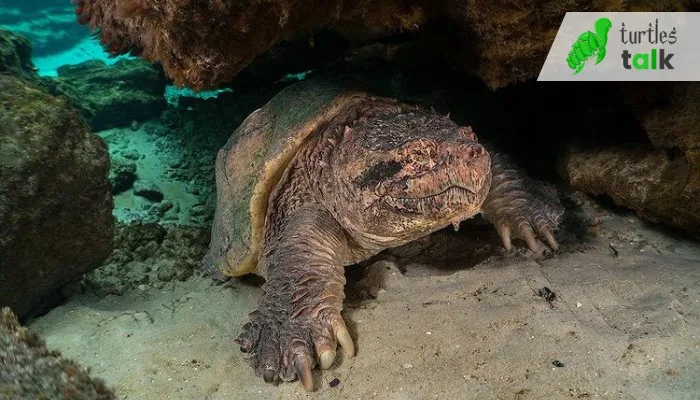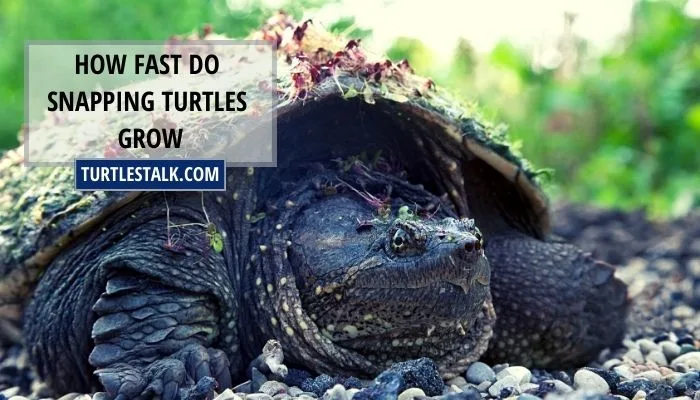How Fast Do Snapping Turtles Grow? – Growth Spurt of Common Snapping Turtle
Snapping Turtles are fascinating creatures with a prehistoric look and powerful jaws that can cause serious injury to humans. These turtles can live up to several decades in the wild, but have you ever wondered how fast they grow?
On average, the growth rate depends on the turtle’s gender, age, food availability, water temperature, and genetics. They grow at a moderate rate, reaching maturity at around 12-20 years old, with maximum sizes varying based on species and environment. Some species can grow up to 35-45 cm in carapace length, while others can reach up to 50 cm.
Growth rates can vary greatly between species, and understanding how fast a particular species grows is essential for understanding its life cycle and ecological role in its specific environment.
This article will explore the factors that influence the growth rate of snapping turtles and provide insights into how quickly these reptiles can reach their full size.
What is The Average Growth Rate Of Snapping Turtles?
Snapping turtles are known for their slow growth rate. Juvenile snapping turtles typically grow quickly for the first few years, reaching a carapace length of approximately 10 cm in their first year.

After this initial period of rapid growth, the rate of growth slows down significantly, and it can take several years for this turtle to reach its full size. The speed at which they grow can depend on several factors, including the species, their environment, and food availability.
In general, common snapping turtles (Chelydra serpentina) are the largest species of snapping turtle and can grow to be up to 60 cm in carapace length. This species takes anywhere from 8 to 20 years to reach its maximum size, with males growing faster and reaching maturity sooner than females.
The environment also plays a significant role in the growth rate of these turtles. In the wild, they can grow more slowly due to limited food resources and exposure to natural predators, while in captive environments, they may grow more quickly with a steady supply of food and a lack of predators.
How to Measure Snapping Turtle Growth?
Snapping turtle growth rates vary based on species, gender, and overall health. Overall, it’s difficult to measure snapping turtle growth because they spend most of their time in water—especially when they are young—and can move quickly on land.
The average snapping turtle growth in length is 5–6 inches within the first two years when they are young.
As they age, their growth slows to 1–2 inches per year. They can grow up to 1.7 feet in length and weigh up to 40 kg. The biggest factor in their health and size is diet—if they have easy access to prey, they will grow larger and healthier.
If they are unable to access food or have other health issues, their growth will be stunted. If you have this turtle as a pet, monitor its overall health and consult a veterinarian with any concerns.
Here is an example table with age, size (in inches) of a common snapping turtle (Chelydra serpentina) assuming average growth conditions:
| Age (Years) | Size (Inches) |
| 1 | 4-5 |
| 5 | 6-8 |
| 10 | 10 |
| 15 | 14-15 |
| 20 | 25-30 |
How Long Do Snapping Turtles Live?
The average lifespan of a snapping turtle is approximately 50 years—though some have been known to live up to 80 years.

This age can be achieved when they live in favorable conditions—meaning they have access to a constant supply of food and shelter from predators.
They are also solitary creatures, so they don’t have to worry about any aggression from other turtles and have no need to breed.
When kept in captivity, these turtles can live much longer than those in the wild due to the constant access to food and shelter. Though they may not reach the maximum age—50 years—they can still enjoy a long, comfortable life in their new home.
Snapping Turtle Growth in Captivity
The growth of a snapping turtle in captivity will greatly depend on its diet, which is usually composed of fish—such as goldfish—snails, crickets, frogs, and small aquatic mammals. Snapping turtles are not the most thriving species in captivity—due to the lack of space and the limited diet.
If properly fed and cared for, a captive-bred snapping turtle can grow up to 12 inches in length and weight up to 10-35 pounds. In the wild—at least in the US—a snapping turtle can measure up to 18 inches long and weigh 25 pounds.
Now, let’s talk about captive care. As I mentioned before, they require a large tank—at least 75 gallons—and a deep water area for them to swim in.
Another important consideration is the basking spot, as they need to get out of the water to bask and warm up. Providing a basking spot on one side of the tank with a lamp and a ramp for them to easily get out of the water.
In addition, the habitat should have good filtration—such as an undergravel filter—to keep the tank clean. It’s also important to have an area for hiding that should be kept moist with some hide boxes and plants. In addition, provide hiding spots for your turtle in the water with plant-based hiding locations.
Factors Affecting Snapping Turtle Growth
Snapping turtles, like other reptiles, grow at a slow pace and can take several years to reach their full size. The speed of their growth can vary based on several factors, including species, environment, and nutrition. Let’s take a closer look at these factors and their impact on the growth of snapping turtles.
Species
Different species of these turtles can grow at different rates, with some growing more quickly and reaching maturity sooner than others. For example, the common snapping turtle is a large species that can grow up to 60 cm and take 8 to 20 years to reach its maximum size.
On the other hand, smaller species, such as the red-eared slider and Mississippi map turtle can take 10 to 15 years to reach maturity.
Environment
The environment in which they live can have a significant impact on their growth rate. In the wild, snapping turtles can grow more slowly due to limited food resources and exposure to natural predators, while in captive environments, they may grow more quickly with a steady supply of food and a lack of predators.
Other environmental factors, such as temperature and humidity, can also impact the growth rate of snapping turtles, with optimal conditions promoting faster growth.
Nutrition
A balanced and varied diet is essential for the proper growth and development of these turtles. Juvenile turtles require more protein in their diets than adults, and a lack of proper nutrition can slow down their growth rate.
In captive environments, providing a diet that includes a variety of foods, such as commercial turtle food, live or frozen insects, and vegetables, can ensure that snapping turtles receive the nutrients they need for healthy growth.
What Is the Biggest Snapping Turtle on Record?
The largest snapping turtle ever recorded was 16-year old alligator turtle that weighed 249 pounds—nearly 5 feet. These reptiles have been known to reach weights of up to 200 pounds.

These specimens are considered the largest of their species for their length and weight. These turtles have three distinct—but overlapping—growth phases throughout their lives. These are the juvenile, sub-adult, and adult phases.
There have been several reports of giant snapping turtles being caught in the wild, with some individuals weighing as much as 50 kg. However, it is difficult to determine the maximum size of this turtle as their growth rate can vary based on several factors, including species, environment, and nutrition.
Conclusion
Snapping turtles are well-known for their slow growth rate. In their natural habitats, these turtles may take up to 20 years to reach their full size. While they can grow faster in captivity, they are still considered slow-growing reptiles.
With a lifespan of up to fifty years, these turtles can continue to grow even after they reach maturity. With the right care and attention, snapping turtles can live long and healthy life. For this reason, it is necessary to ensure they have the right environment and diet to promote healthy growth and development.
You now know a lot about the growth of snapping turtles. Have you ever seen one in the wild? How big was it? Leave a comment below.

